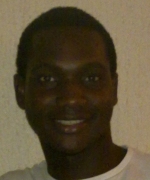Today the foreign factor was churning through papers again, this time looking at prior experimentation done with Nucleosome Core Particles (NCLs). These publications are along the lines of the work us internationals will be doing around the lab, so as we know what its like to be in a strange land, for those of you who are foreign to NCLs, we’ll turn this post into a lesson on NCLs and how they act in certain environments.
If you can imagine wrapping a thick string around a cylinder, that is a basic picture of an NCL, with DNA strands being the string and a histone octamer, or protein being the cylinder. As seen in the image to the right, the ‘nucleosome’ refers to this whole string and ball structure of a 146-147bp (base pair) DNA strand wrapped around the histone. This tiny structure (10nm) has a lesser negative charge than isolated DNA, due to the positive core, with an overall charge of -150. The nucleosomes can be thought of as the building blocks of chromosomes, as multiple nucleosomes can be wound together to form chromatin fibers, which be further arranged to form chromosomes. The reason we are interested in these nucleosomes is that due to the small, dense and complex structures, not much is known about the processes that compacts nucleosomes into chromatin fibers.
We’ll let that information be absorbed and talk about experimentation tomorrow. Foreign factor gone.





